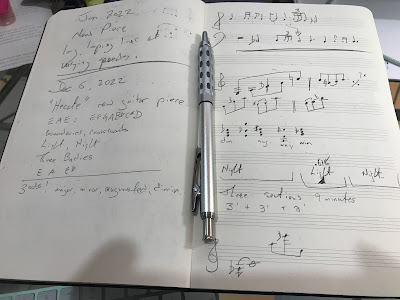From the New York Times: The Complex History Behind a Vienna Philharmonic Tradition.
If the Vienna Philharmonic’s annual New Year’s Concert is a global success, its legacy and reach rest on five pillars: a marvelous orchestra; internationally renowned conductors; a timeless repertoire, by the Strauss family and other composers of the 19th century; a splendid location, the gilded Musikverein; and TV broadcasts watched most recently by some 1.2 million people in 92 countries on five continents.
The event, which returns this weekend with Franz Welser-Möst leading the Philharmonic, is by now a familiar one, and a multiday affair with three concerts. Between the preview performance, the New Year’s Eve Concert and the New Year’s Concert, conductors and the orchestra are faced with the extreme demands of an emotionally and physically challenging marathon. Just days after the series of concerts, CDs and DVDs of the Jan. 1 concert are released for sale worldwide.
* * *
One of the more unfashionable principles held to be true around here is that the crucial element in all aesthetics is quality, which is traditionally exhibited in the idea of a "masterpiece." This is often attacked from various angles: the relativity of taste, equity, social justice and even things like decolonization. Obviously masterpieces produced by dead white men are intrinsically suspect! But despite this, those pesky masterpieces keep hanging around, the real benchmarks and touchstones of their genres. The Wall Street Journal has an ongoing series titled "Masterpiece" and they collect the most popular ones of the year here: The Most Popular ‘Masterpiece’ Columns of 2022. One of the most interesting:
“The Waste Land,” the most influential poem of the 20th century, was published 100 years ago in T.S. Eliot’s highbrow journal The Criterion. This wildly original and difficult long poem portrays with imaginative authority the modern world as a spiritual desert. Wretched people devoid of religious belief lead a meaningless existence. By describing the bitter mood, after World War I had destroyed a belief in European civilization, the poem touched raw nerves.
The poem is written in disconnected pieces (“These fragments I have shored against my ruins”) and has sudden transitions.
Feel free to set this beside The Rite of Spring by Stravinsky, arguably the greatest composition of the 20th century. Another essay in the series is on Dante and begins with this quote:
T.S. Eliot said: “Dante and Shakespeare divide the world between them. There is no third.”
But he is wrong, of course: there is Homer.
* * *
Here is something interesting: Pandemic Woes Lead Met Opera to Tap Endowment and Embrace New Work
Facing tepid ticket sales, the company will withdraw up to $30 million from its endowment and stage more operas by living composers, which have been outselling the classics.
Art does often respond to necessity, going back to the Renaissance. And it does not necessarily result in bad art.
* * *
Here's an interesting little statistic: https://twitter.com/byHeatherLong/status/1607808853462089728. Americans are far more likely to move to Mexico than Canada. Well, yeah, just compare the weather!
* * *
From the Guardian: Tears, cheers and whirlytubes: our critics pick their classical highlights of 2022. Picking out one example almost at random:
No artist touched the soul more deeply and more often than the German baritone Christian Gerhaher. I heard him five times in 2022, all at the Wigmore Hall. Three recitals were devoted to Hugo Wolf, bringing peerless vocal illumination to this highly varied repertoire. The most recent, reunited with his regular accompanist Gerold Huber, was a hair-raising account of Schubert’s Schwanengesang cycle. But the most extraordinary was Gerhaher’s appearance at a private memorial concert for Bernard Haitink, at which his singing of Mahler’s Ich bin der Welt abhanden gekommen touched levels of vocal artistry that are exceptionally rare.
* * *
Slipped Disc weighs in on: ALL-NEW 2023 POWER COUPLES OF CLASSICAL MUSIC. Or it might just be an excuse to post a photo of Yuja Wang's legs.
* * *
'Second chair' musicians are just as trained as principals and paid lower. Here's why.
There are generally three roles in any section, and each is a tenured position that takes an audition to win.
First, there’s the principal player, the section leader.
Next is associate principal, who plays first part on some pieces during a concert if the principal wants to focus on a particular work. For concertgoers, this is why the wind section often looks different in the first and second halves of a symphony performance.
“The idea is that the demands of principal positions are such that to play entire programs isn’t conducive to peak performance,” said Ron Samuels, Pittsburgh’s second clarinetist, who played principal in a smaller orchestra in Toledo, Ohio, for 15 years before moving to Pittsburgh.
More information at the link, but it is actually a fairly complex situation that goes well beyond how much training the musicians have.
* * *
Here is baritone Christian Gerhaher and pianist Gerold Huber with a Schubert lied.
Here is Hommage à T. S. Eliot by Sofia Gubaidulina, one example of her close aesthetic connections with other art genres:
And finally, the Vienna Philharmonic New Year's concert from last year:







